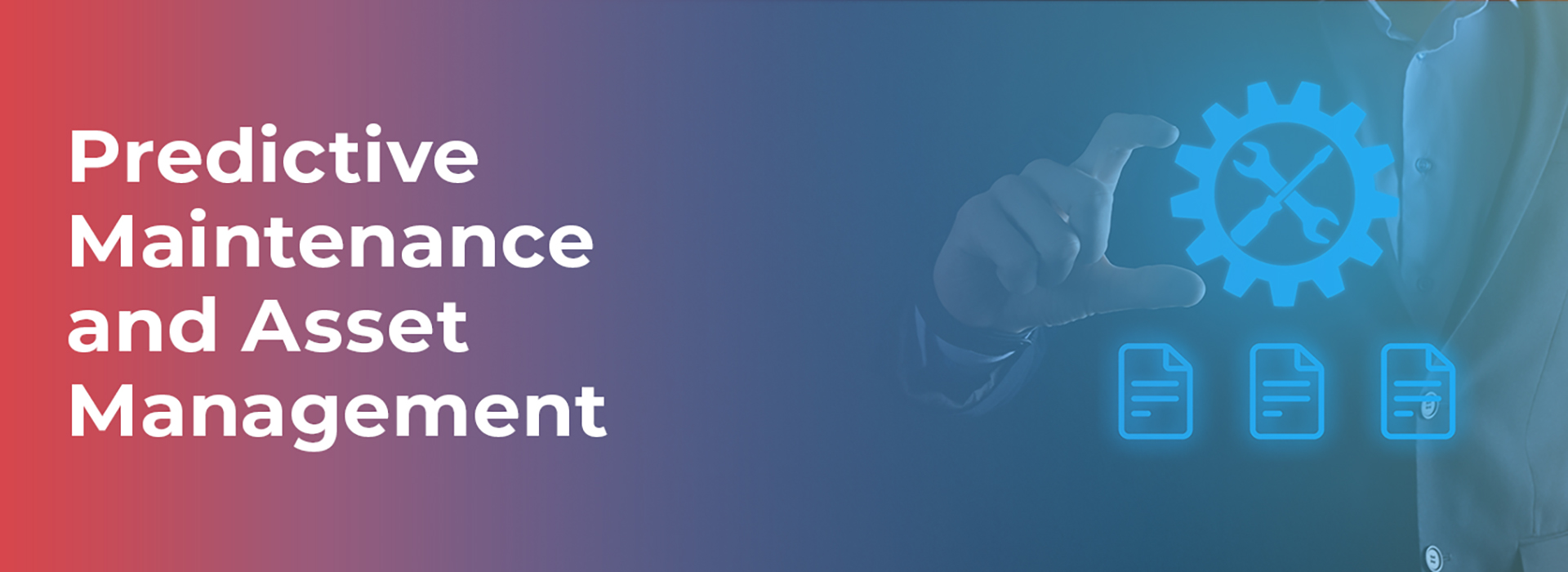The Role of AI in Predictive Maintenance and Asset Management
In the twenty-first century industrialization revolution, companies consider asset utilization and operational efficiency factors critical for achieving competitive success. For this reason, rising numbers of businesses are embracing artificial intelligence (AI) for predicting failure and managing assets. With the utilization of AI, it is possible to predict when certain pieces of equipment will malfunction. They save a significant amount of time and money, and they improve the overall performance of the equipment.
In this article, we will look into how AI contributes to predictive measures and future innovations in industrial operations management, not forgetting the “AI Gov” associated with it.
What is Predictive Maintenance?
Predictive maintenance refers to the treatment of maintaining assets and equipment so that no downtime occurs. This is different from heuristic and was corrective maintenance (waiting until the equipment has already broken down fixed) or preventive maintenance. Which follows the passage of time or usage with routine checks. Predictive maintenance relies on data and AI to assess the actual status of assets at any given time. Rather than corrections after a breakdown occurs. This makes it possible to anticipate failures. Because the notion of fault is the main basis of maintenance management, predicting. When the equipment will fail enables the maintenance people to avoid that failure from occurring.
The cornerstone of predictive maintenance is the collection of real-time operational data from various sensors and other devices. Utilizing this information, such as temperature, vibration, pressure, and performance, the AI algorithms can detect any patterns indicating an inevitable failure. This leads to performing more efficient maintenance activities at the appropriate times and allows for only the necessary repairs to be carried out, thereby cutting down on expenses and increasing efficiency.
How AI Enhances Predictive Maintenance
Artificial intelligence has revolutionized the prospects of predictive maintenance. The following paragraphs summarizes how AI brings about successes in predictive maintenance approaches:
Data available is vacuumed and analyzed on a real-time basis
AI-enabled data analysis enhances fast CRM. Users can obtain all information about the environmental status without reading lengthy reports or undergoing excessive monitoring, because the system assesses the entire setup rather than just specific parts. With such feedback, organizations are able to prevent potential failures in advance and carry out repairs when it will be most necessary to do so.
Advanced Pattern Recognition
AI’s machine learning algorithms are capable of discovering known correlations in splines that cannot be clearly perceivable or achievable by the typical human. Machines following this concept can gradually learn from collected historical data and identify many subtle changes in the performance of equipment which signal some deterioration and possible failure.
Accuracy improvement
Preventive maintenance strategies often result in prolonged downtimes due to unnecessary pre-scheduled maintenance. However, AI can accurately predict machine failures, ensuring that maintenance occurs only when needed, which significantly minimizes both maintenance and downtimes.
Models of predicting failures
Using the data collected in the past, AI estimates the confidence in certain models and builds models that predict when specific equipment will fail and how much useful life remains. Instead of waiting until a unit is down and needs unplanned maintenance, an understanding of the chances and period of failure enables an organization to plan maintenance and resources more effectively.
Maintenance task automation
AI can project not only the needs of maintenance but also perform some processes in the general maintenance procedure automatically. For example, AI systems are able to send notifications, create work orders, and even purchase spare parts when the need arises.
What is Asset Management?
You can refer to asset management as an organized and comprehensive methodology for managing and improving an asset throughout its entire uptime, which includes acquisition, use, upkeep, and disposition. Proper asset management helps organizations to enhance the effectiveness of their physical assets while also controlling the related risks and expenses.
In the past, asset management processes contained manual tracking of quantities, routine inspections, and scheduled maintenance. This scenario is, however, changing with the AI encoding of comprehensive analysis and insights that contribute to effective management of resources.
AI in Asset Management
With the help of advanced technology like AI, organizations are making more accurate asset management and are able to analyze data in a quicker, better, and efficient way. This is how asset management is improved by the use of AI:
Appendix C Predicting All-Ups in the Performance of the Asset Control
Organizations can utilize various predictive maintenance models that are made possible by AI support to maintain and optimize the operational capability of various assets within a defined time. Predictive topics to be addressed the way of predictive analytics also has been introduced to contemplate when a particular asset may be due for repairs or any other administrative measures.
Supportive Systems for Convincing Organizations regarding Investment and Assets
Systems that are driven by AI provide advanced actionable insights for organizations that aid in the relevant allocation of assets, investments and disposition of assets among others. AI gathers numerous data regarding various actions and recommends that which has the highest approval rating for asset value enhancement and risk situations.
Lifecycle Mitigation
AI systems enable organizations to carry out lifecycle management of assets to ensure that every asset is fully utilized. An AI based model can formulate when the best time for replacing or upgrading an asset will be in order to avoid operational interruptions and increase the longevity of assets.
Risk Reduction
AI technology minimizes the risk of failure in any asset by identifying problems. This identification reduces the risks of unexpected downtimes, helping businesses effectively manage their operations and avoid unnecessary losses.
Automated Inventory Management
Inventory management can also be automated by AI in terms of predicting the required time when some assets will be consumed, by stalking the consumption trends and establishing useful patterns. This takes care of the negatives brought about by stockouts since equipment or spare parts are only called for whenever it is necessary.
Use Cases of AI in Predictive Maintenance and Asset Management
There exists diverse applications of AI in the twin fields of predictive maintenance in asset management and in managing the assets themselves. Agricultural equipment provides several examples:
Manufacturing Industry
Manufacturing facilities typically use AI-based predictive maintenance to monitor equipment, including machine tools, robots, conveyor belts, and others. This approach helps avert production halts, as AI can analyze sensor data in real time to foresee a machine breakdown and guide the maintenance efforts.
Energy Sector
In the Energy sector, companies use AI applications to maintain crucial components such as wind turbines, power stations, pipes, and most importantly, to perform predictive maintenance on assets. Maintenance of these assets helps in maximizing the efficiency of production of energy minimizing costly breakdowns or repairs.
Transport and Logistics
It is now possible to keep track of vehicles, airplanes and ships using AI technology. With the help of AI, it is possible to forecast which components are more likely to require service,thus preventing loss of operational time for the fleets and lowering the cost of maintenance as well as improving safety.
Oil and Gas Industry
In the oil and gas sector, companies chiefly apply AI in asset management and predictive maintenance. Such systems focus on the safety of capital assets such as pipelining systems, drilling rigs and various other equipment by predicting where there will be problems before they lead to any mishaps or downtime in production.
Healthcare
In healthcare, organizations apply AI systems in the forward management of assets like MRIs and ventilators. Predictive maintenance assures the effective service of these assets, helping to improve the quality of services available to patients while minimizing the overheads involved.
Future Trends in AI-Powered Predictive Maintenance and Asset Management
With the continuing progress of technology, it is certain that the impact of AI in predictive store cord service maintenance and its asset management will be more embraced. Some key future trends for AI that will be remarkable include but are not limited to:
Interoperability with IoT
AI and IoT will enhance the efficiency of asset management through real-time monitoring of assets. These devices generate massive amounts of continuous data, enabling AI systems to compute “how good an asset’s health and performance are likely to be.”
Edge Computing
Whew! Edge computing will be very useful in allowing the execution of AI algorithms on the different devices that are on the edge of the networks. As a result of this, developers will build systems that allow fast computing within the device, without dependence on the cloud. This will be important for sectors and applications with short response times.
AI-Driven Maintenance Automation
With the development of AI over time, the completion of more maintenance tasks will enhance the maintenance of systems. Technicians will not only anticipate maintenance needs; machines will also execute and dispatch necessary repair plans and carry out essential temporary tasks, further cutting operating costs and minimizing downtime for the machines.
Conclusion
Introduced in various industries, AI took storm on predictive maintenance and management of assets by putting in the efficient tools that help to minimize losses, maximize efficiency and enhance the duration of use of the assets. With more innovations in technologies, companies will continue to enhance their predictive capabilities, thereby forever changing the way they handle assets in business.
FAQs
Ans: – AI technology enhances predictive maintenance by analyzing real-time sensor data, recognizing the patterns associated with equipment failure, and determining the perfect time to perform maintenance. This concept enables organizations to undertake maintenance by reason of need, thus cutting expenses and avoiding unnecessary stoppage of work.
Ans: – In asset management practices, AI is useful in providing sophisticated analytics aimed at performance of an asset, enhancing the quality of decisions made, maximizing the asset life cycle, lowering uncertainties, and managing inventories.This optimizes the utilization of the assets and reduces the likelihood of failure at any given time.
Ans: – The AI predictive maintenance use case has the most impact on industries such as manufacturing, energy, transportation, oil and gas, and healthcare that operate large machines and equipment. Such industries seek 365 days of asset uptime and minimize Ai driven indulgence in loss of time.
You Might Like
February 28, 2025
Project EKA – Driving the Future of AI in India
Spread the loveArtificial Intelligence (AI) has long been heralded as the driving force behind global technological revolutions. But what happens when AI isn’t tailored to the needs of its diverse users? Project EKA is answering that question in India. This groundbreaking initiative aims to redefine the AI landscape, bridging the gap between India’s cultural, linguistic, […]
March 7, 2025
What is Data Annotation? And How Can It Help Build Better AI?
Spread the loveIntroduction In the world of digitalised artificial intelligence (AI) and machine learning (ML), data is the core base of innovation. However, raw data alone is not sufficient to train accurate AI models. That’s why data annotation comes forward to resolve this. It is a fundamental process that helps machines to understand and interpret […]
March 6, 2025
Vertical AI Agents: Redefining Business Efficiency and Innovation
Spread the loveThe pace of industry activity is being altered by the evolution of AI technology. Its most recent advancement represents yet another level in Vertical AI systems. This is a cross discipline form of AI strategy that aims to improve automation in decision making and task optimization by heuristically solving all encompassing problems within […]
March 5, 2025
Use of Insurance Data Annotation Services for AI/ML Models
Spread the loveThe integration of artificial intelligence (AI) and machine learning (ML) is rapidly transforming the insurance industry. In order to build reliable AI/ML models, however, thorough data annotation is necessary. Insurance data annotation is a key step in enabling automated systems to read complex insurance documents, identify fraud, and optimize claim processing. If you […]


 Previous Blog
Previous Blog







